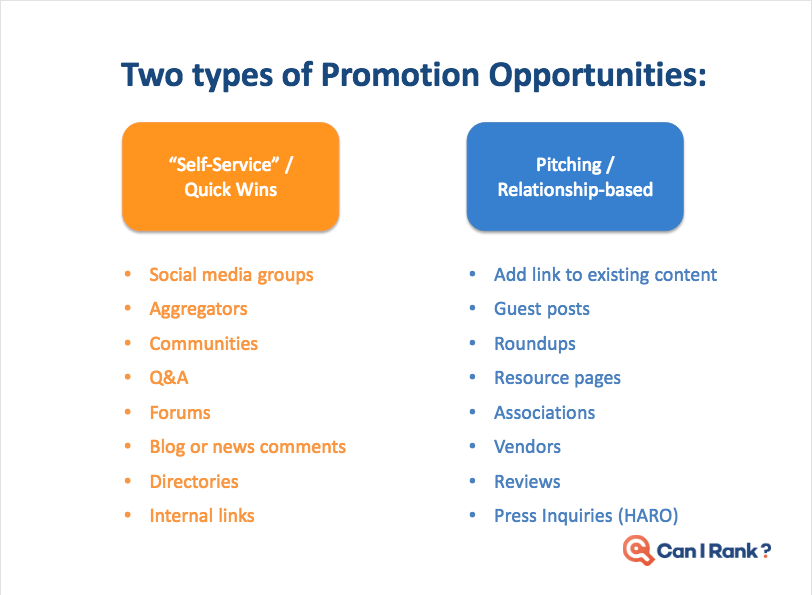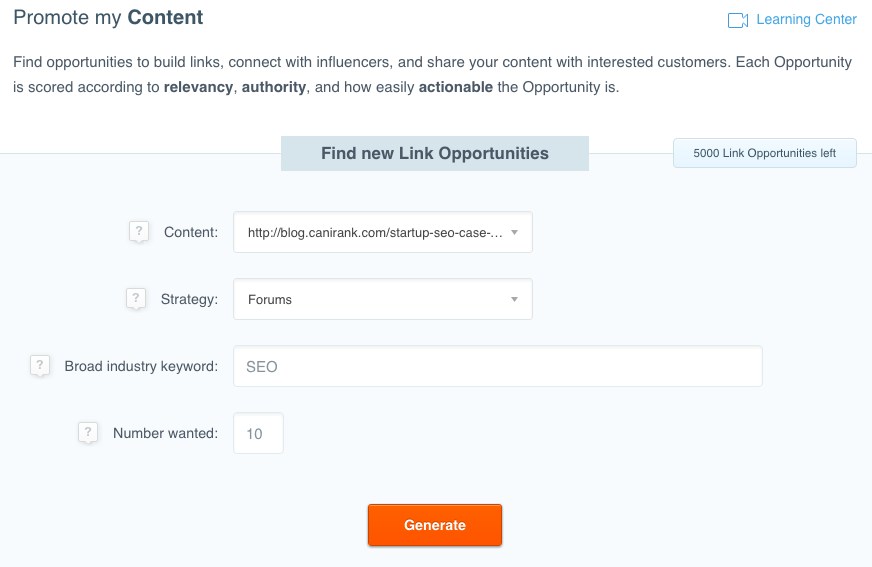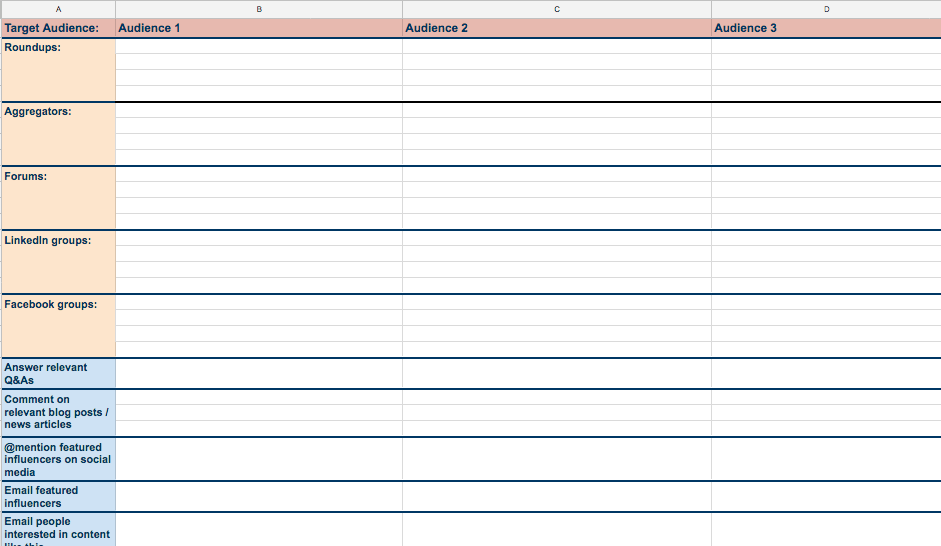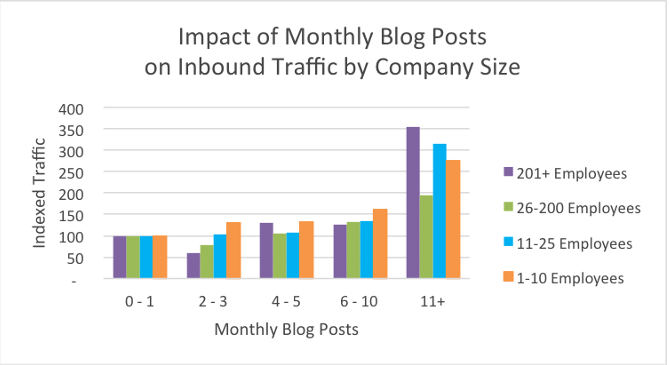Alas! You’ve finished the piece of content you’ve been pouring your
Much like an overwhelmed and sleep-deprived parent to a newborn, you may be asking yourself, “Now what do I do with it?!”
Breathe. We’re here to help; while we’re not exactly your expert resource for parenting advice, we can affirm that you’ve come to the right place for learning what to do with that sweet bundle of joy, known as content.
How Do I Get My Content “Out There”?
The first step is understanding that content isn’t enough. What value does your content bring to the world if you publish it and it gets dusty sitting on the shelf waiting for someone to read it? Nobody puts baby in a corner. You must have a content amplification strategy in place to get your content out there.
Here at CanIRank, every time we publish a new piece of content, we have a clearly defined process, known as content amplification, in place to maximize the value we get out of that content. We’ve invested precious time in ideation and content creation, so we need to ensure we’re maximizing the return on that investment by putting a defined content amplification strategy in place before our content is published to help it reach a wider audience.
A key element of making this content amplification strategy effective is making sure it’s a repeatable process that can be used every time we publish a piece of content. It’s important for us to mention here that while a content amplification process needs to be repeatable, it isn’t necessarily a “one and done” strategy. Think of it as an umbrella that covers several strategies for how you’re getting your content in front of relevant audiences and influencers. For each piece of content you publish, the content amplification process should make it clear what your options are for amplifying that content to influencers, aggregators, and more. Wash. Rinse. Repeat.
Without promotion and a defined content amplification process, our content doesn’t go further than the reaches of our own network. With well-researched amplifiers and an easily repeatable process, we gain access to the content amplification universe. Cue Star Wars Main Theme.

Image source: Pexels.
The content amplification universe, you say? With content being such a saturated space in the world of digital marketing, your content is forced to compete with all the other noise in the universe for a chance to be heard.
Let’s break it down: are your chances of being heard greater if you share content with just your own network of twenty people, or if you target an influencer who has a network of 20,000 people? Think: you’ve been playing gigs at grammy’s annual birthday barbecue, but now it’s time to play a stadium gig. Let the people hear your jams!
When you invest time in quality research of where to send your content once it’s complete, your eyes are opened to a universe of social media influencers, content curators, forums and communities, Q&A sites, research pages and aggregators who have significant clout with their network and who may be interested in your content (and who will possibly link to it).
So how exactly does a defined content amplification process and this universe of amplifiers benefit your content? Well-executed content amplification brings numerous perks:
- Immediate traffic boost
- Social media engagement
- Immediate indexation of the new content
- Improve the likelihood that the new content will rank well for target keywords
- Improved reputation amongst influencers and linkerati (pull in more/easier amplification next time you publish content)
Defining Your Audience and Researching Your Amplifiers
In all honesty, this step should occur before you even begin crafting your content. Building out your content amplification process before you begin writing is going to save you from fishing your dead content out of the water after you hit publish and will help you identify the appropriate amplifiers on the front end.
So how do we get a defined content amplification process in place?
First, we identify the amplification opportunities at play:

For each of these self-service categories, we’ll determine who our audience is, where they’re hanging out on the internet, and how they’re consuming content (video, long content, etc.), and then we’ll jump into the conversation and contribute value.
For each pitching/relationship-based opportunity, we try to identify the kind of content the influencer is interested in and how to reach them. Then we start building a relationship with them: e.g., commenting on their blog posts, following them on social media, or helping to share or distribute their content. This process gets targets at least aware of your name so that when we follow up with them to pitch our own content (or a guest post, adding a link to their resource page, etc.), they are much more inclined to help.
Though it does take time, the influencer relationships built through outreach become like your own personal distribution network, multiplying the impact of your content or any other time you want to get the word out.
How to Find Influencers for Your Content Amplification Process
We’ve given you a lot of information to chew on. When you’re starting out in the content amplification game, it can feel a bit like going down the rabbit hole in Alice in Wonderland. We’ve been there; we get it.
You may be saying to yourself, “So now that I understand the benefits of amplifying my content and the direct benefit of leveraging other influencers’ networks, how do I know which influencers are the right ones to target, and how do I find them?” To answer that, we’ve put together some tips, tricks, and tools on how to find influencers in your niche.
Also included are a few items to consider before establishing a relationship.
Items to Consider While Researching Influencers:
- Do they have an engaged audience?
- Think: retweets, active blog following, social shares. How engaged is the influencer’s community with the content the influencer is putting out?
- Engagement trumps the number of followers.
- How relevant and/or valuable is the influencer (and their following) to your content and vice versa?
- How strong is their blog or domain authority? This is a big one. Targeting influencers who grant “dofollow” links and have a high domain authority (a score predicting how well they rank on search engine result pages) is going to give you the link juice you need to improve your own domain authority.
Research these items before you invest time in building a relationship.
Researching Amplifiers Using BuzzSumo and DropMyLink
You can begin your research by performing a quick Google search of the keyword your content is targeting. Based on the results, manually explore opportunities for some “quick wins.” These are places such as communities, Q&A forums, and aggregators that would be a good fit for sharing your content and participating in conversations. Unfortunately, not every search result is going to be a quality site, so you’ll need to spend some effort qualifying each and every lead. You want to have a sharp, focused list to maximize your content amplification process.
Save yourself some time and use CanIRank’s Promote My Content tool to find relevant communities, Q&A sites, and forums to add to your content amplification strategy. Every result is rated as to its authority, relevancy and the percentage of dofollow links. You can sort this list as well so you can focus your time pursuing only the best leads.

To supplement our search, we often utilize Drop My Link for identifying relevant Link Roundups. This simple app helps formulate syntactically correct Google searches based on criteria selected from pull down menus. That’s one less thing to remember!
For identifying content that is doing well in a niche and who the big players (influencers) are in that space, BuzzSumo is often our go-to resource here at CanIRank.
Using this tool allows you to enter the topic or domain you’re targeting, and the search returns results that show Facebook engagements, LinkedIn shares, and number of backlinks for each influencer. After researching the available options, we select the influencers with whom we would like to engage.
Alas! We’ve made it. We’ve chatted about everything from promotion categories to the far reaches of the content amplification universe. One last quick tip and then you’re off!
To maximize the research you’ve put into identifying amplification opportunities, we highly encourage you to organize your findings in a spreadsheet. That way it will be readily available when you hit publish on your content.

Pictured above is an example of a template we use here at CanIRank. Be sure to check back in once you’ve established your own content amplification process.
May the content be with you!




I ran a check through your software – why is your keyword data so different than SEMRush?
Thanks for trying out our software Mitch! Which keyword data are you referring to specifically?